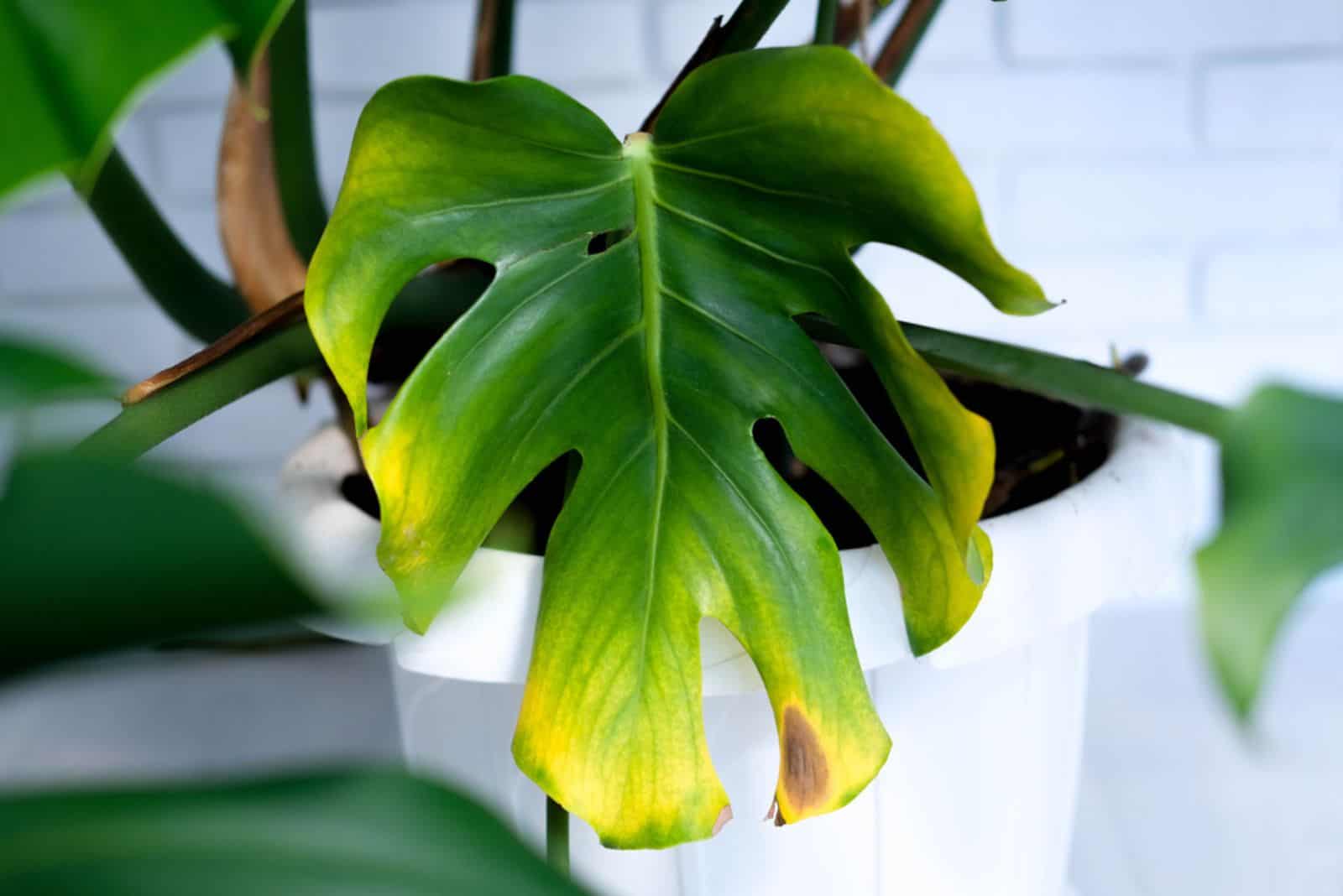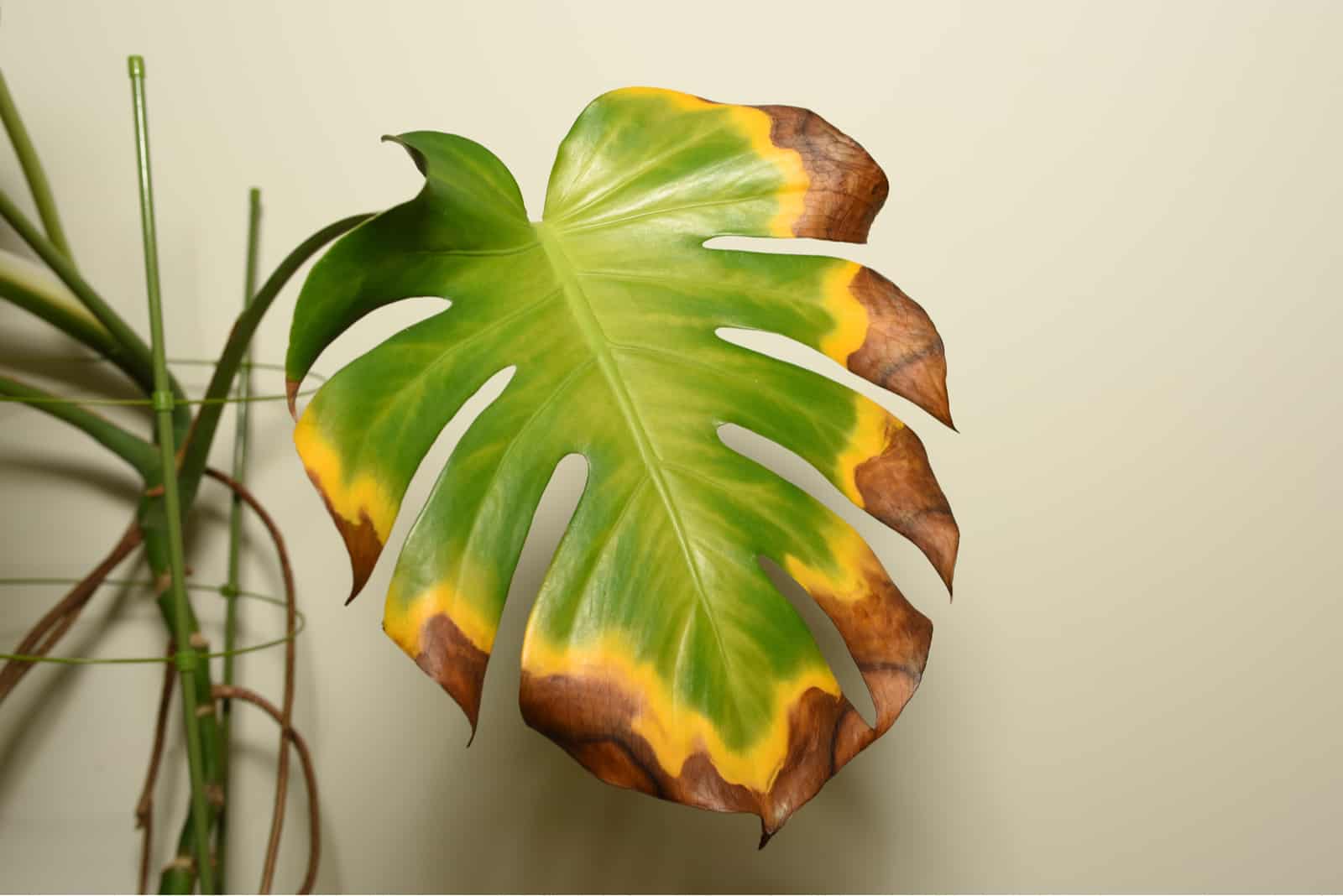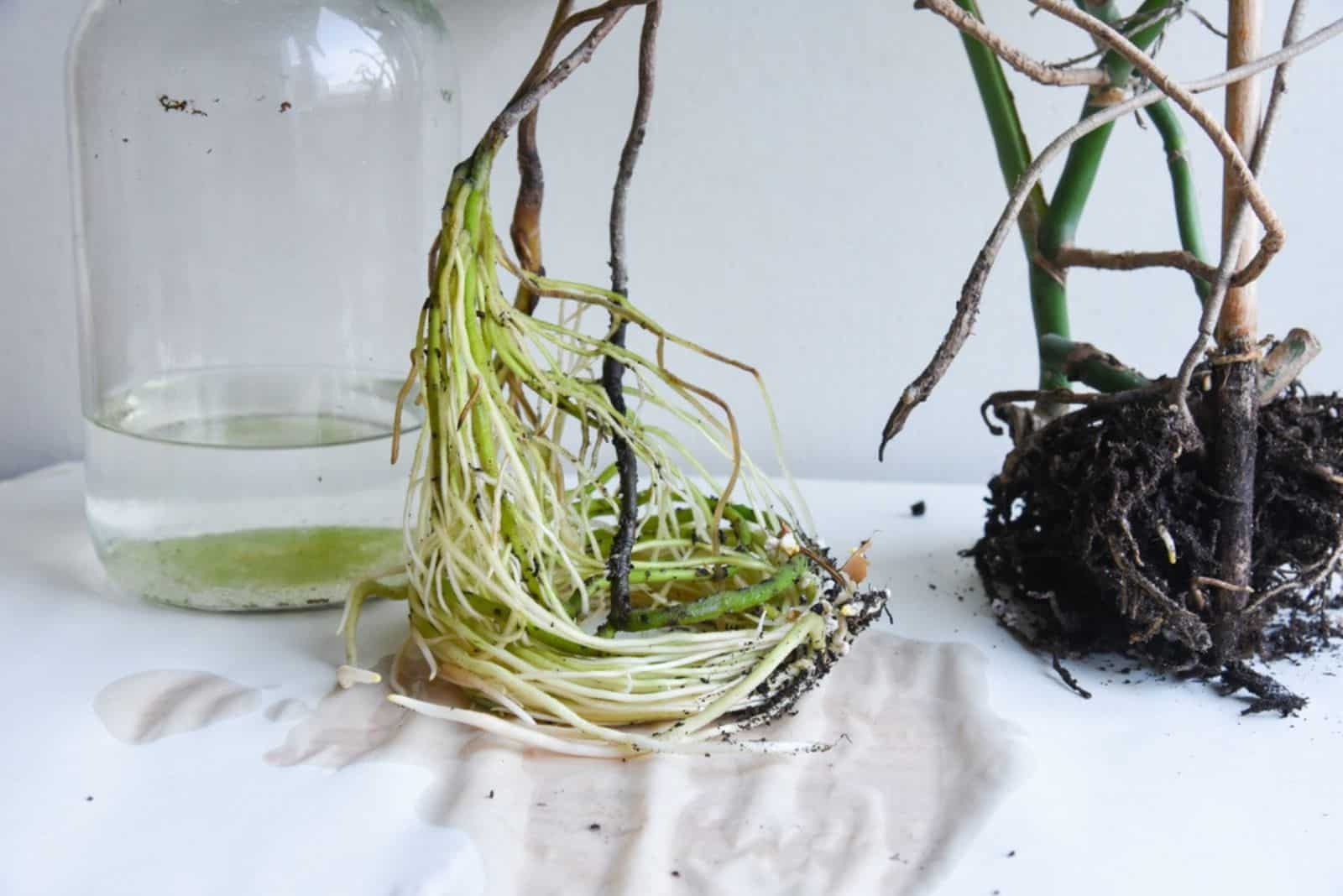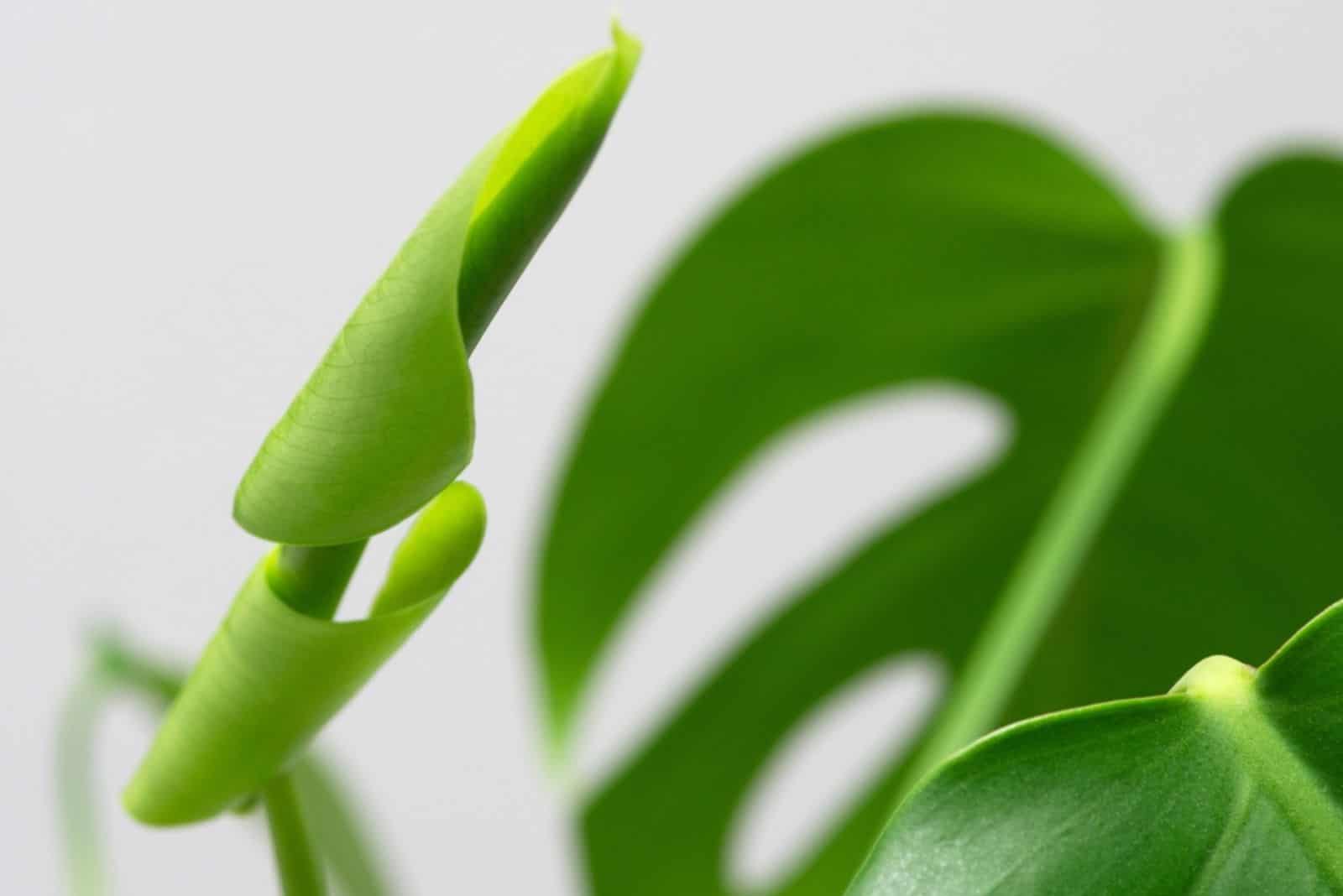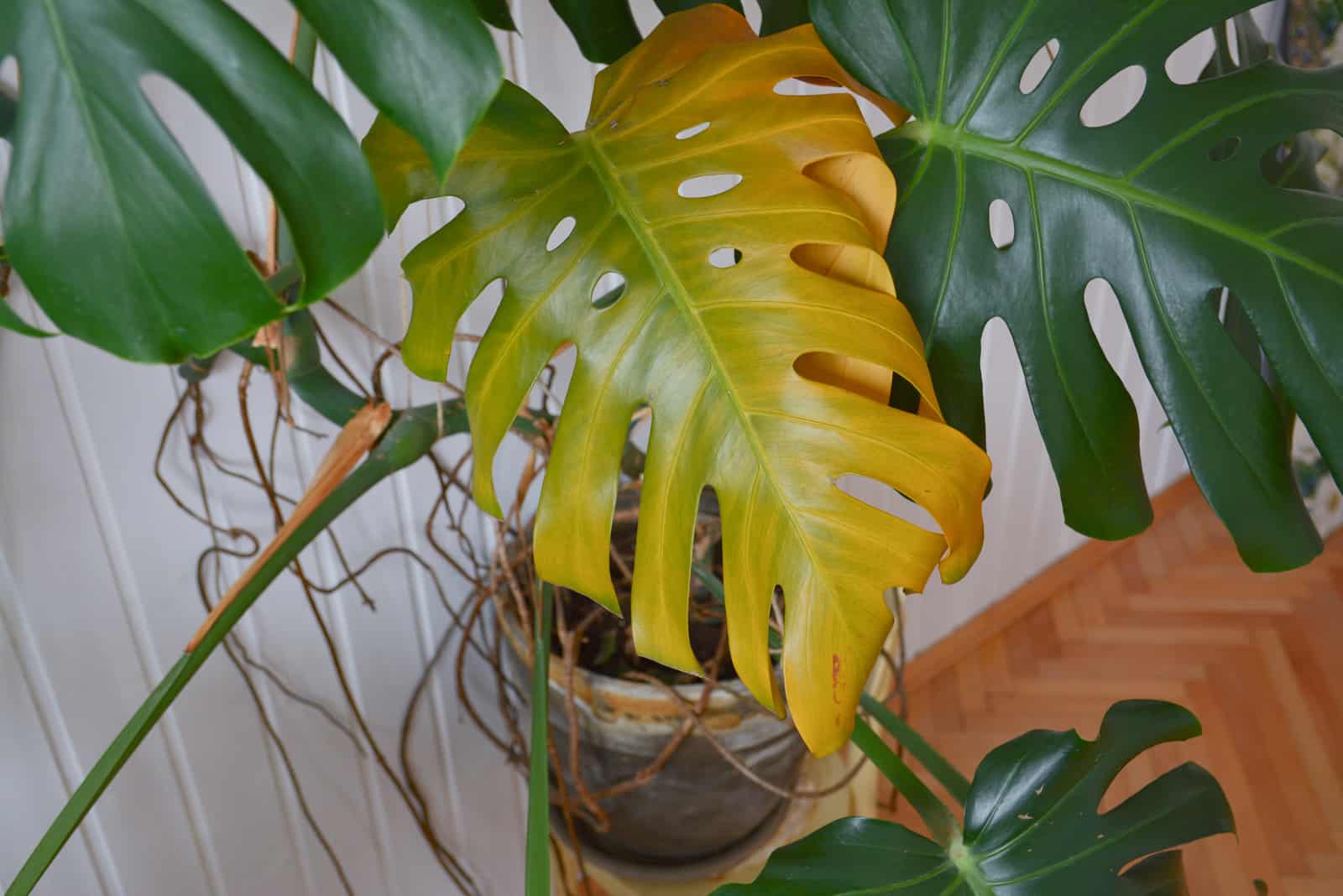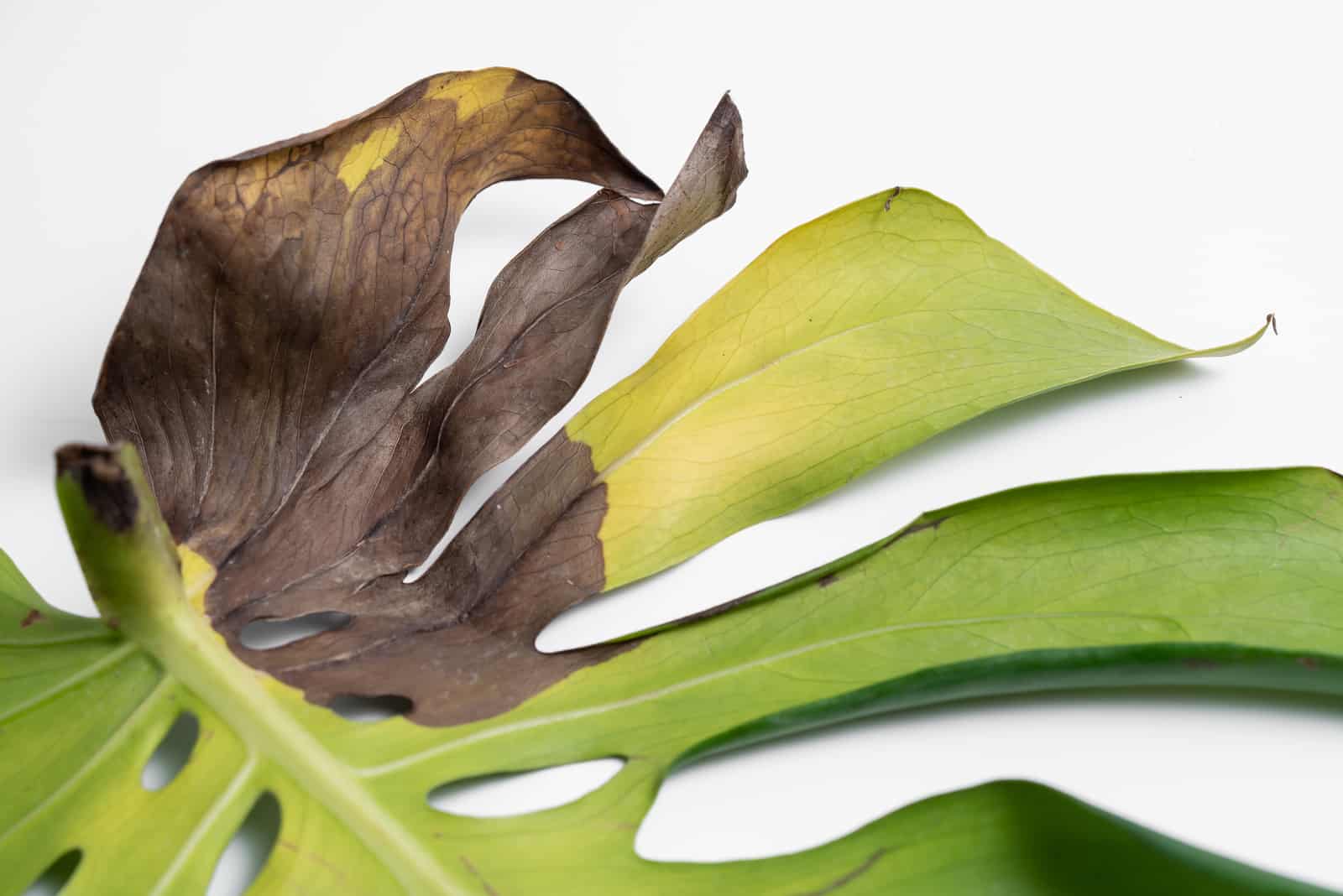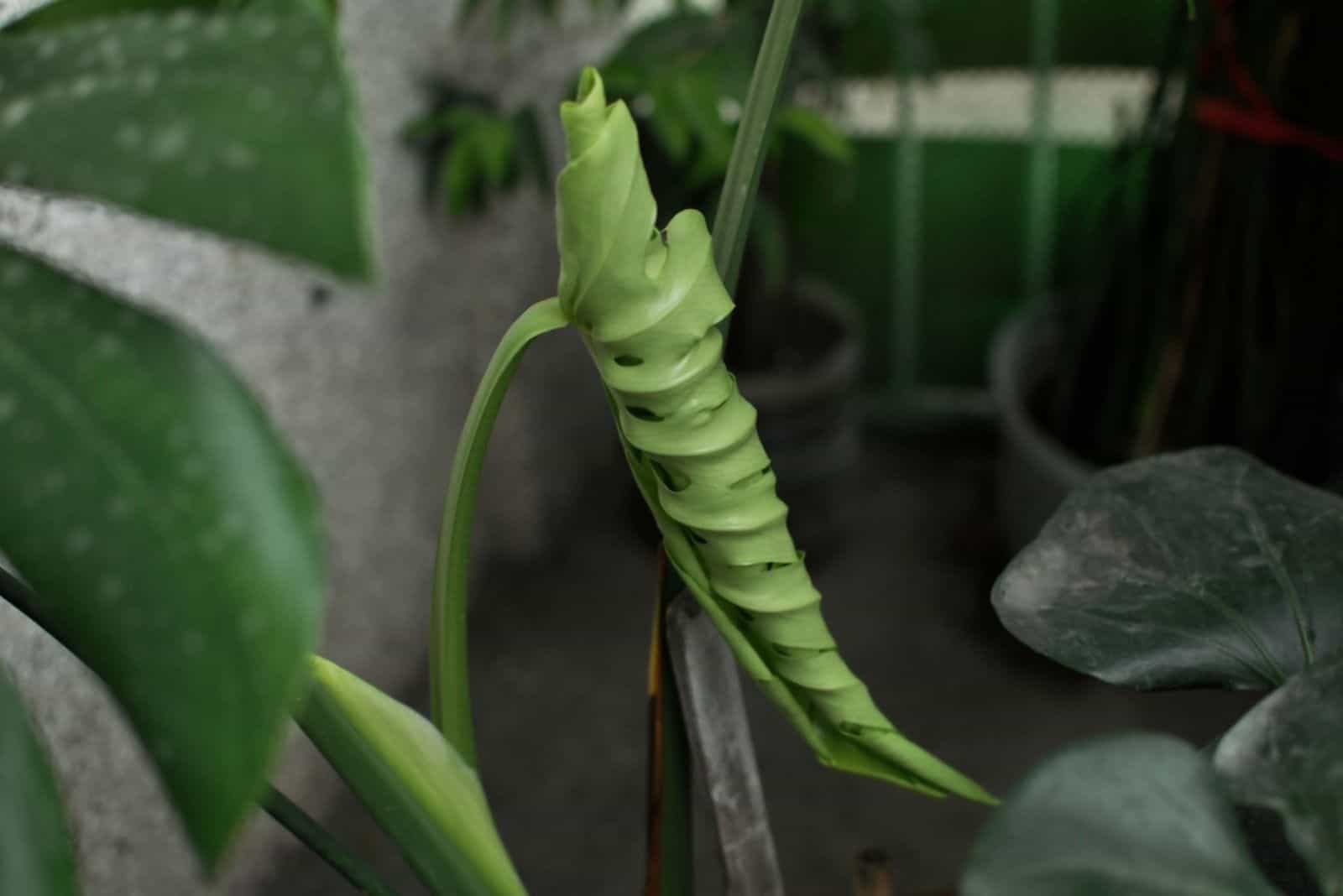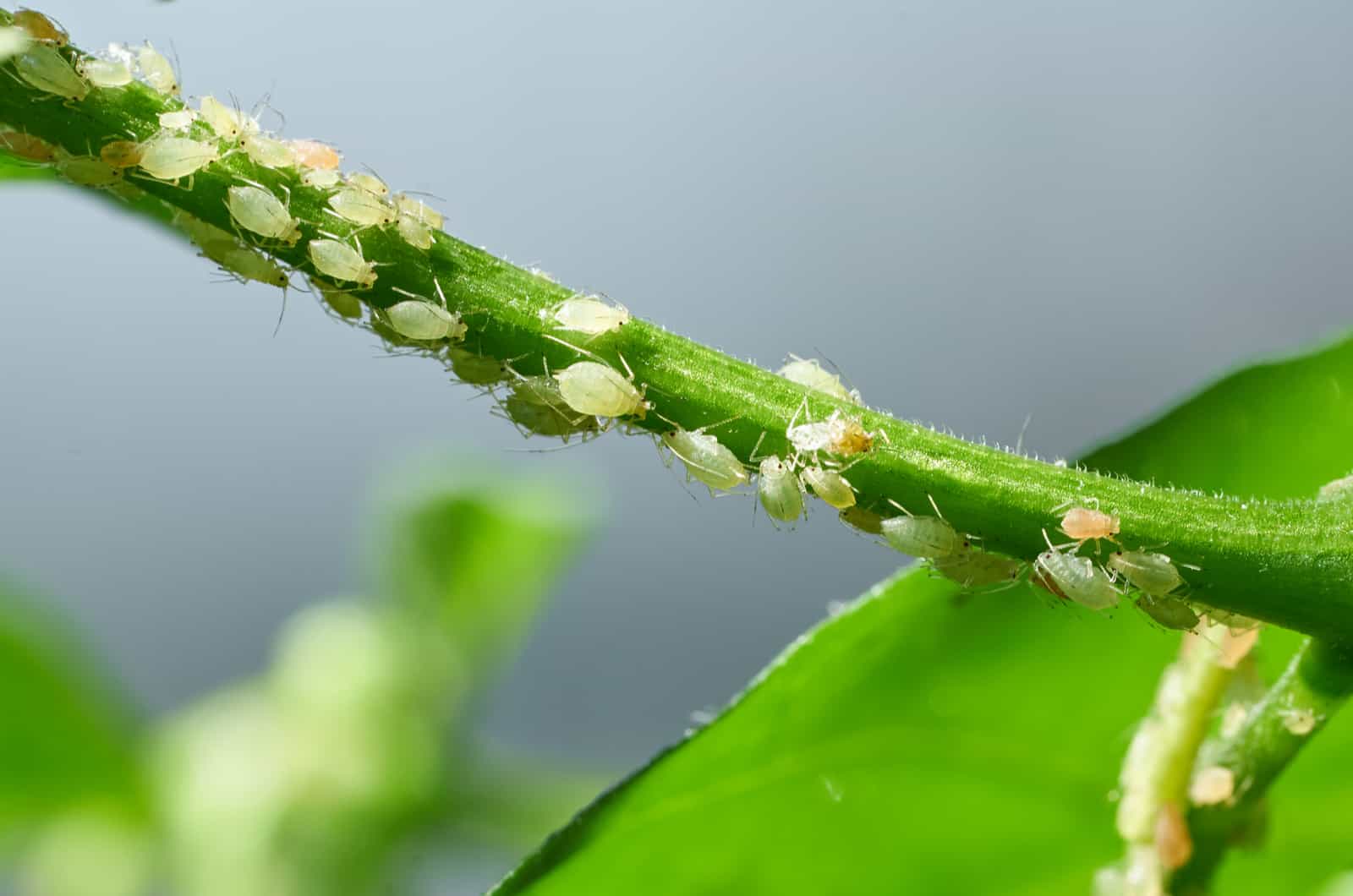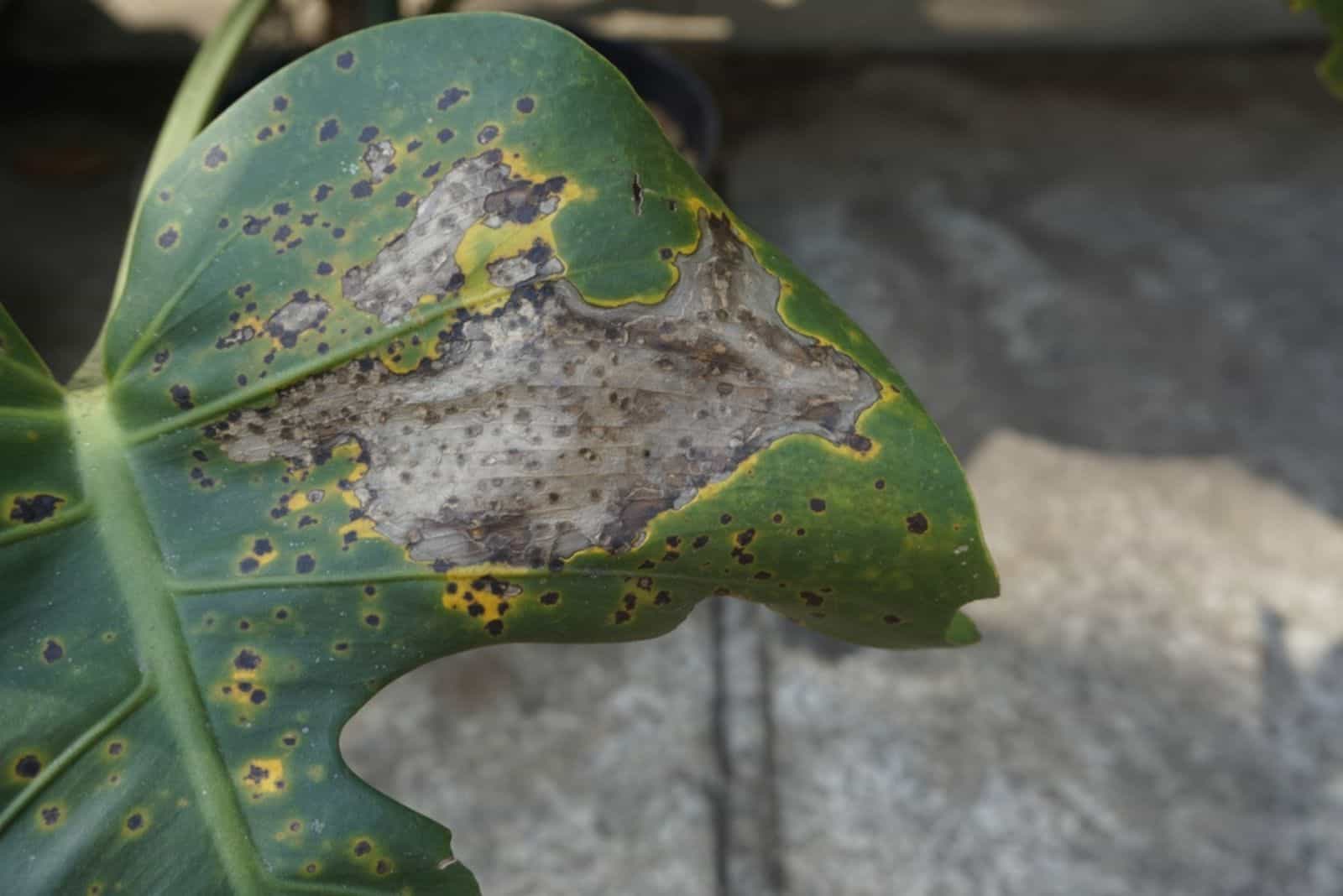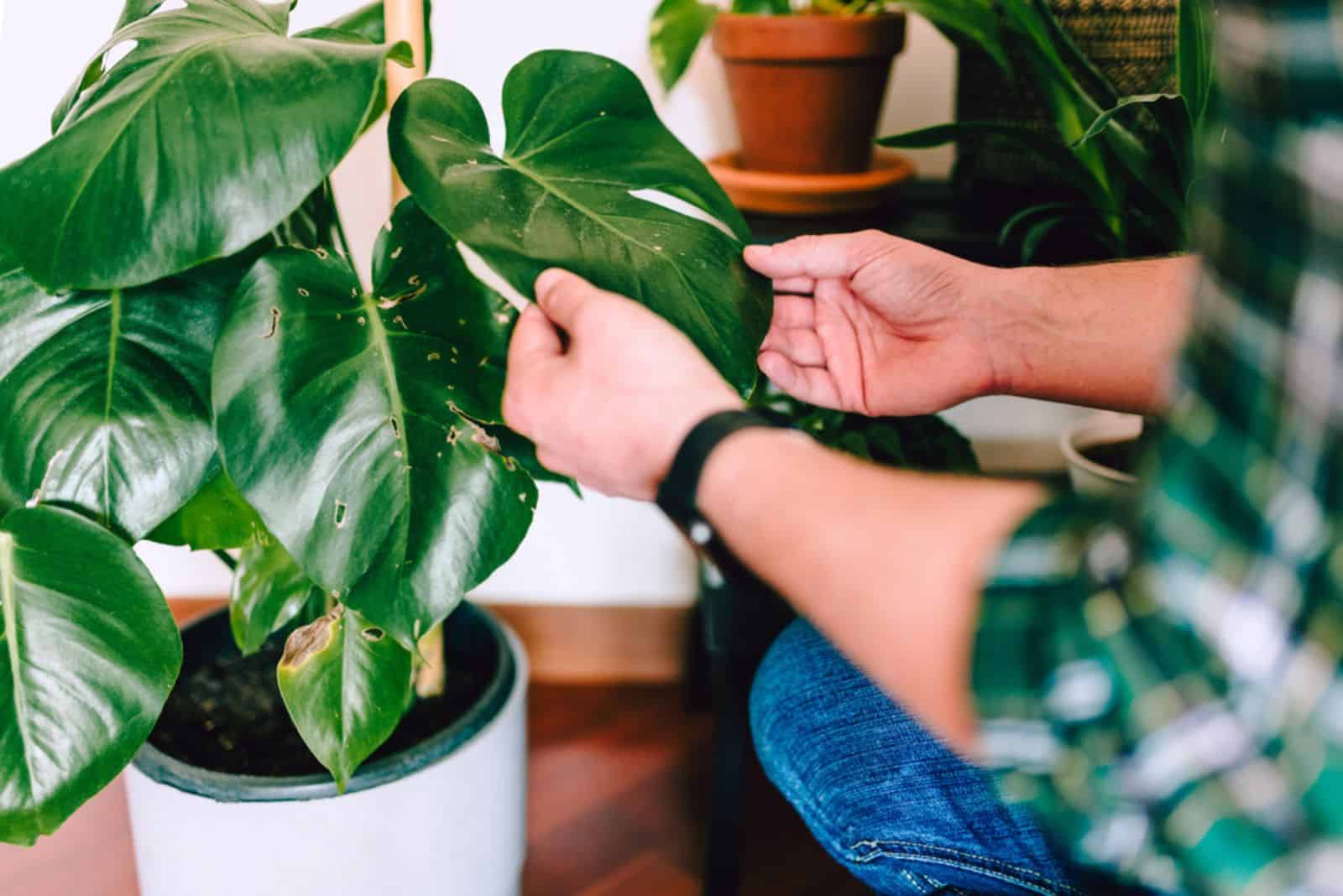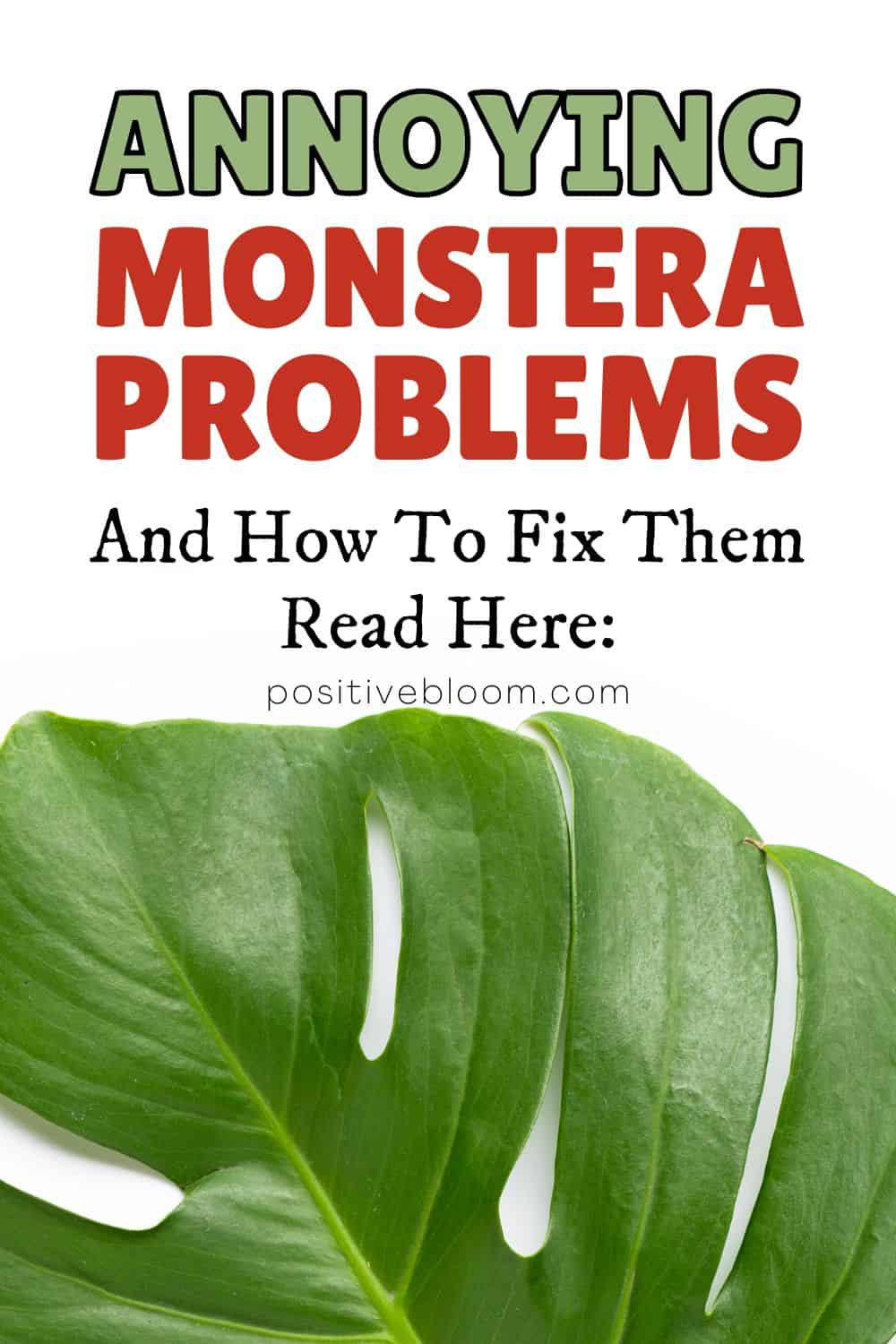If you are a plant enthusiast, you must have heard of Monstera plants! With their beautiful, dark green, and fenestrated leaves, they are a gorgeous houseplant. As well as their decorative features, these plants are also known for being very hardy.
Even though they don’t have any special requirements, if there is something off with the growing conditions it will definitely affect a Monstera’s well-being. You might notice that the leaves are starting to turn yellow or that the plant is wilting, which are just a few of the Monstera problems you might have to deal with.
Luckily, these are easily fixable, and your plant will be able to bounce back quickly!
Keep reading to find out everything you need to know about Monstera problems and how to solve them.
9 Common Monstera Problems
Maybe your Monstera plant doesn’t look as sharp as it used to – perhaps the Monstera leaves are not unfurling or they have started turning yellow.
The most important thing is to get to the bottom of these issues. You should figure out what’s causing your plant to behave differently and what you can do to try and fix it.
Let’s look at some more examples.
1. Leaves Turning Yellow
It is so awful when you notice that your Monstera has yellow leaves instead of the lush, beautiful green ones that make your room look more lively. There are a few reasons your Monstera might have yellow leaves, including:
• Inadequate watering
• Underfertilization
• Low light conditions
• Sudden temperature changes
Inadequate Watering
Monsteras are tropical plants that thrive in moist soil, which means that you will have to be careful not to give them more than enough water or it can lead to an overwatered Monstera. On the contrary, if you don’t water your Monstera plants often enough they won’t enjoy having their soil bone dry.
Therefore, we have to cover both underwatering and overwatering.
As we said, these plants thrive in moist soil. When you skip a few watering sessions the soil will become compact, which prevents the roots from properly absorbing nutrients and water, and also prevents airflow reaching the Monstera roots.
In this case, you will have discolored leaves rather than waxy, green leaves.
You can assess if the issue is more serious by counting how many leaves are discolored. For instance, if there are only a few yellow leaves, they may simply be older leaves that are almost certainly dead. A few yellow leaves are nothing to be concerned about if your Monstera is otherwise healthy.
Remember, these plants love moist soil that is not soggy.
When you water your Monstera too often, the soil will become overly saturated. This can lead to several issues, especially if you keep your plant in a humid environment. Soggy soil attracts fungus that can cause root rot, which is a deadly disease that will completely destroy your Swiss Cheese plant.
Poor drainage and inadequate potting soil can also contribute to this particular issue.
If you spot numerous yellow leaves on your plant, always take into consideration the watering first. Determine if you have been overwatering or underwatering the plant (simply try to remember the last time you watered the plant), and then fix it accordingly.
If you have been overwatering the plant, you definitely don’t want to give it another round. There are more details on problem-solving in the section below.
Underfertilization
Every living being needs food and nutrients, and this also applies to your plant. If you don’t give your plant any plant food, they won’t be able to reach their full potential and the leaves will start looking pale and yellow.
Even though Monstera plants are slow growers that don’t need many fertilizers, there are a few nutrients that are necessary for their growth and development. We often add fertilizers to boost growth and encourage new leaves!
You have probably heard of the NPK formula — these fertilizers contain Nitrogen, Phosphorus, and Potassium, which are the nutrients that your plant can’t live without!
If you don’t give them any fertilizer at the beginning or during the growing season, expect that your plant will have droopy, yellow leaves. After all, nitrogen is crucial for lush plant leaves.
Give your plant some food each month during the growing season, and avoid applying fertilizers during the winter months as these plants go dormant and don’t need much water or food.
Low Light Conditions
Making sure there is enough light is another crucial aspect of plant care. While these plants can endure low light, that doesn’t guarantee they’ll thrive in a dim corner.
Although it may seem ideal there, your Monstera wouldn’t agree.
Successful photosynthesis results in new leaves and new growth, and plants require enough energy to photosynthesize. They also make use of this energy to enhance leaf unfurling and stop tissue damage.
If your Monstera doesn’t receive enough light, its new leaves will take a long time to open or, more often than not, won’t unfold at all. This is because the proper amount of light is necessary to ensure that there is adequate energy for this process.
As well as the leaves not unfurling, the bottom leaves will start to turn yellow due to the lack of light. You might think that the plant needs water and give them more than enough water, which can lead progressively to overwatering.
Also, if your Monstera displays legginess, then it needs more light.
Sudden Temperature Changes
Monsteras are tropical plants that are used to growing in a warm climate. Therefore, if you keep them in any temperatures that are lower than the preferred range, they might get cold damage. The first sign of cold damage is yellow leaves and wilting.
Please remember that these plants thrive in temperatures between 60 to 80 degrees Fahrenheit.
However, they are not a fan of sudden temperature changes either. For instance, if you keep your plant close to a window that is open and closed constantly, especially during the winter season, it can harm your plant. You might enjoy a cold draft, but your plant won’t.
Keep your plant away from any cold drafts such as windows, vents, and air conditioning, and also keep them away from heat sources such as radiators, fireplaces, space heaters, and so on.
2. Monstera Root Rot
Root rot is one of the major issues when it comes to growing houseplants, especially tropical ones that thrive in moist soil. It can be hard to determine how much water your indoor plant needs, so you might easily end up with a rotting plant without even knowing it!
Many fungi thrive in wet soil, and this includes Monstera root rot.
Pythium, Rhizoctonia, and Fusarium fungus are thought to be the most common causes of root rot.
The fungus might already be in the soil, but it won’t start to grow until it becomes wet.
These fungi spread quickly through the air and by insects. Therefore, it is likely that your other plants will become infected if one of your houseplants has fungus in its soil.
Stunted growth, yellowing and drooping leaves, black spots on the foliage, mushy soil with an unpleasant smell, discolored and mushy roots, and a mushy stem are signs of root rot in Monstera plants.
Unless the soil is wet, nothing will develop or be damaged.
How To Inspect The Plant
Here is a brief explanation of how to examine your Monstera:
1. Carefully examine the leaves to determine whether they are tender or dry to the touch and if they have begun to yellow or wilt.
2. Dig up some dirt and assess the soil’s moisture content. Examine the leaf structure and general look while inhaling the aroma.
3. Examine the plant’s stem and crown.
Possible Causes
The main causative would be overwatering the soil. This will attract fungi that will slowly settle in the soil and disrupt your plant’s overall health. Every cause that is mentioned leads to activating fungus in the soil.
Next is overfertilization. If you apply more fertilizer than is necessary, the roots won’t be able to adequately absorb water.
The roots will get smaller and find it more difficult to absorb water from the soil if you add too much organic matter or nitrogen-rich fertilizer to the soil.
Therefore, as long as you keep watering your plant, the extra moisture will remain in the soil and eventually rot the roots.
Surprisingly, underwatering can also lead to root rot. It’s intriguing how root rot can also be brought on by a lack of water. However, dry soil cannot cause the disease directly.
Your Monstera will also suffer if you forget to water it or decide to water it less than usual to prevent overwatering.
The plant’s roots will contract in order to store the remaining water as the soil dries up. Because some soil components may become rootless, adding water will delay evaporation and cause root rot.
In addition, an underwatered Monstera will exhibit wilting, stunted development, browning or yellowing of the leaves, and leaf curl.
How To Fix
The only solution at this point is to repot the plant. You will have to buy a new pot and use fresh soil as the previous one is contaminated with fungus. Be careful when taking the plant out of the pot, and trim off any decaying or damaged roots.
Healthy Monstera roots should be dipped in hydrogen peroxide or neem oil before planting. Neem oil is a natural fungicide that can assist with the removal of numerous fungi and pests.
After this, you will have to make sure that you are properly taking care of your Monstera plant.
First of all, make sure that you are using the right kind of soil mix, which should be well-draining and able to retain just enough moisture for your plant’s needs.
You should then make sure that you are using the right kind of pot. This includes having drainage holes in the bottom so the excess water can be removed, and also being made of porous material to allow for the water to evaporate.
The best kind of pots for your Monstera would be terracotta pots that have drainage holes in the bottom.
You should also adjust your watering habits. Always check the soil before you water your plants. If the first few inches are moist, you can postpone the watering session for a few days. If the soil is dry, then it’s time for watering.
It’s hard to tell exactly when to water the plant because its environment also affects its needs. For instance, if the humidity levels are high then you won’t have to water the plant as much because it also absorbs the water from the air.
However, if it grows in low humidity you will have to water the plant more frequently.
If your plant has reached a point where the root ball is entirely affected by root rot, and it can no longer be saved, then you should try propagation.
Read also: How And When To Propagate Monstera In Water: Pro Tips
3. Monstera Leaves Curling
If Monstera needs are not met, the issue might be displayed by curling leaves. This is mainly caused by inadequate watering, although other issues might also affect the plant’s leaves.
You should carefully examine the leaves to see if they are curled inwards or outwards.
If they are curled inwards, it means that they don’t have enough moisture. They curl inwards to prevent water evaporation. This is a telltale sign that your plant is thirsty and needs water as soon as possible.
On the contrary, if they are curled outwards it means that they have received more than enough moisture either from the air or by watering.
Possible Causes
• Underwatering — as we mentioned, leaves curl inwards in this scenario. Poor drainage, inadequate soil, and infrequent watering all contribute to this issue.
• Extreme heat — if you suddenly change the location of your Monstera plant to somewhere that receives more direct sunlight, or if you put it near a space heater, the leaves will start curling. This happens because the air humidity drops and the soil dries out quicker, which is why it can easily lead to underwatering issues.
• Overwatering — high humidity and too much watering don’t mix very well. The plant’s leaves will have excessive moisture, which is why they start curling outwards.
• Low humidity — even if you use the right watering habits, if there isn’t enough moisture in the air for the leaves to absorb they will start curling. Remember that Monsteras are tropical plants that originate from very humid environments.
How To Fix
Troubleshooting tips for these issues are pretty much the same — check the soil before giving your plant any water. Please note that Monsteras like humidity levels between 60% to 90%.
Fortunately, there are a few easy techniques to increase humidity. One simple answer is to get a humidifier, which can turn on and off automatically and be set to specific levels. You won’t even have to spend much money because humidifiers are no longer as expensive as they once were.
You can also make a pebble tray by placing some pebbles in a tray, covering them with water, and placing your plant on top. Your plant will receive just the right amount of moisture as the water in the tray evaporates.
You can also try misting your plant every day or placing it in a room with higher humidity, such as a bathroom or a kitchen.
Another very important care tip is to grow your Monstera in well-draining and porous soil to ensure that oxygen reaches their aerial roots. To ensure that oxygen reaches their aerial roots, the majority of tropical plants need potting soil that drains well and is porous.
The ideal potting mix for a Monstera plant consists of coco coir, sphagnum moss, orchid bark, and perlite.
Because it enhances soil drainage, perlite is also useful. These plants prefer alkaline soil, so ensure that the soil pH is about 7 (you can buy soil tests on Amazon to examine pH levels).
4. Leaves Turning Brown
Brown leaves are common problems in the majority of tropical plants, especially the tips and edges of the leaves. There can be lots of reasons this is happening. It can be a completely normal natural process that every plant goes through, so don’t panic right away.
It is very unpleasant to see those beautiful leaves turning brown, especially if they are variegated! Let’s look at the possible causes to find out what might be the culprit.
Possible Causes
• Underwatering — if you notice brown spots on crispy leaves, it means that your plant is extremely thirsty. If these leaves also start to curl up, it is pretty clear that you are dealing with underwatering.
• Low humidity — brown and crispy leaf edges usually occur due to a lack of moisture in the air. These plants need humidity to keep their leaves green and glossy.
• Overwatering — as we mentioned, dark brown or blackish spots on Monstera leaves might be an indication of root rot brought on by overwatering. Additionally, some light brown crisping could appear because the now-damaged roots can no longer absorb enough water.
How To Fix
The answer is the same as in the previous section — make sure that you give your plant just the right amount of water, keep humidity levels at around 60% (invest in a humidifier or try misting to boost humidity), and make sure that your plant is growing in well-draining soil.
5. Lack Of Fenestrations
The huge fenestrations in Monstera leaves are what makes them special. Genetics are the main factor contributing to the split leaves of the Monstera plant. The plant uses this system to ensure that the weakest and lowest parts of the plant receive enough light, water, and protection.
If there were no fenestrations, the lower leaves wouldn’t receive enough light or water from the rain because they would be covered by the older and larger leaves.
Your Monstera Deliciosa (also called Philodendron Monstera) might sometimes produce new leaves that don’t have any splits, and this is because they are not able to photosynthesize properly. Let’s take a look at the possible causes.
Possible Causes
• Low light conditions — although these plants can grow in low light conditions, it doesn’t mean that they prefer it. If your plant doesn’t receive enough light, it might lose its unique fenestrations.
• Age of the plant — fenestrated leaves are not produced by young monsteras until they are 2–3 years old and about 3 feet tall. This is most likely caused by the fact that immature plants have significantly smaller leaves than older ones. One idea holds that monstera leaves fenestrate to allow sunlight to reach the lower leaves, so there is no reason for immature leaves to split just yet because they aren’t very big and wide.
How To Fix
You should fix the lighting conditions first. To maintain optimal growth and development, indoor plants must be placed in indirect light. Your green friend should be placed close to an east or south-facing window so that it can receive early or late-afternoon sunshine.
Avoid going too far in the other direction! Your plant’s foliage will be burned by direct sunlight, leaving you with crispy and curled leaves.
You can always invest in some grow lights to modify the quantity of light your plant receives if your apartment faces north or if you want to provide your plant with the best growing circumstances possible.
6. Droopy Leaves
Droopy leaves are often similar to those that have curled, and their causes aren’t too different either. For instance, your plant might be looking gloomy because it is thirsty — the same thing goes for leaves curling inwards.
Monsteras are all about the leaves, and as a proud plant parent you don’t want your plant to be droopy and sad!
Let’s look at the possible causes.
Possible Causes
• The plant is thirsty — if you skip one or two watering sessions your plant will have droopy leaves. However, as soon as you water it again the plant will look like its old self!
• Dry soil — drying out quickly might also be an issue. This might mean that your plant is root bound or that you’re keeping it near a heat source.
• Transplant shock — many plants are fragile and won’t react very well to repotting. This is completely normal, and your Monstera plant will bounce back quickly.
• Inadequate temperature — any sudden temperature changes might affect your plant. The same thing goes for keeping it in inadequate temperatures that are either too hot or too cold.
• Pest infestation — droopy leaves are often a sign of pest infestation, which is accompanied by discolored leaves and spots on the leaves and stems. Common Monstera pests include spider mites, aphids, thrips, and mealybugs.
How To Fix
Maintain an adequate water regimen and make sure that you grow your plant in a well-draining and porous soil mix. Once repotted, water your plant thoroughly so that it can get comfortable in its new environment.
Keep your Monstera plant between 60 to 80 degrees Fahrenheit, and don’t put it near vents or windows during the winter season.
When it comes to a pest infestation, you should carefully examine the plant to determine the exact culprit. Pests are usually treated with pesticides, neem oil, or insecticidal soap. Learn more about Monstera pests in the section below!
7. Monstera Pests
Spider mites, mealybugs, thrips, scales, and aphids are the soft-bodied insects most frequently found on Monstera leaves.
Even if indoor plants aren’t as vulnerable to pests as outdoor ones are, it doesn’t mean they can’t still be harmed by them.
Because new leaves haven’t yet opened, and the insects are so little and scarcely visible to the naked eye, it might be particularly difficult to see if your Monstera has pests. For this, I advise using a magnifying glass.
Inspect the undersides of the leaves first. Your Monstera probably has pests if you see any sticky stuff, webbing, or tiny brown spots. You might be dealing with a major pest infestation if the leaf tips have also turned yellow.
Common Pests
• Spider mites — small insects called spider mites typically live on the undersides of leaves. Like spiders, they also spin tiny, silken webs! These mites, however, typically dwell in warm, dry environments on indoor plants.
• Aphids — sticky residue is frequently left on the leaves by tiny pests called aphids. Despite being tiny, these creatures can cause serious damage to your Monstera plant. The typical withering and curling of leaves is followed by a sticky substance. Wilting frequently occurs as a result of serious infestations.
• Mealybugs — tiny white bugs that drink plant juices and steal all of their nutrients. Mealybugs are easily noticed on the underside of the leaves, which is where they often reside in colonies.
• Fungus gnats — small files that are occasionally found around houseplants. They infect soil, potting soil, organic matter, and other places where organic matter decomposes. Their larvae consume roots, which can be an issue for indoor plants, nurseries, and greenhouses. They are drawn to drains, wet soil, diseased plants, and organic soil waste.
• scales — their bodies are noticeably shaped like brown discs. These insects occasionally have a waxy coating that gives them the appearance of white cottony tufts stuck to the plant’s leaves. Scales adore drinking plant juice and stealing all the nutrients from it.
How To Get Rid Of Pests
Getting rid of these annoyances can be hard, especially if you are dealing with a severe pest infestation. My Monstera Adansonii barely survived a severe mealybugs infestation!
Luckily, I am here to share some tips and tricks on how to get rid of pests with you!
Insecticides and insecticidal soaps are effective treatments for mealybugs.
Plants are typically blasted with water to remove scales. If the infestation is severe or the insects return, an application of insecticidal soap is necessary.
Neem oil, rubbing alcohol, hydrogen peroxide, and insecticidal soap are common treatments for spider mite infestations. Alternative techniques include repotting, allowing the soil to totally dry up, and also adding natural predators.
A solution of rubbing alcohol and water can be used to get rid of spider mites; brush the leaves with the mixture after dipping a towel in it.
Similarly to how spider mites are handled, aphid infestations can be controlled with insecticides, neem oil, or manual removal (though this is tough because they are extremely small).
Plant flies can be eliminated with a few different techniques. For instance, you can add pebbles to the soil’s surface or introduce plant fly predators, all of which are effective fly traps. Maintaining a clean environment and being careful not to overwater or overfertilize your Monstera plant are the best ways to avoid a plant fly infestation.
Keep in mind that a healthy Monstera plant won’t be susceptible to pest infestations, so carefully follow the care guide for these plants!
8. Monstera Diseases
As well as pest infestation, your Monstera plant is also susceptible to various fungal infections. As we already mentioned, root rot is a deadly fungal infection primarily caused by overwatering.
However, there are also other fungi that are attracted to Monsteras.
Don’t worry, you can easily get rid of these diseases by applying fungicides, though it is important to start treating them before the disease progresses.
Common Diseases
• Bacterial leaf spot — this infection causes lesions on the leaves, which then become yellow and drop off. Bacterial Leaf Spot can destroy your Monstera and infect your other houseplants if not treated.
• Anthracnose — symptoms include brownish leaf lesions and patches, as well as dieback. In severe circumstances, the foliage can even start to fall off.
How To Fix
First and foremost, you should immediately isolate the infected plant to prevent the infection from spreading to your other houseplants. Fungal infections are usually treated with copper fungicides, though you can apply neem oil as well.
Make sure that you are correctly watering your Monstera plants because these diseases are usually brought about by overwatering.
9. Leaves Turning Black
Black leaves are a sign that there is something seriously wrong with your plant, so you have to act quickly to find the reason your plant’s leaves are turning brown.
Don’t worry, this doesn’t necessarily mean that your plant is dying. In most cases, your plant can bounce back quickly and look as good as new!
Possible Causes
• Inadequate fertilization — black leaves can mean that you have either over-fertilized or under-fertilized your plant. For instance, if you keep fertilizing the plant during the winter season, then the chemicals will probably build-up in the soil and disrupt the normal functioning of the plant’s roots. This results in leaves turning black.
On the contrary, if you don’t apply any fertilizers during the growing season, your plant won’t have enough nutrients to produce its lush, green leaves.
• Sunburn — keeping your plant in direct light can lead to the leaves getting sunburned, especially if you suddenly put them in place with direct sun exposure.
• Disease — black spots on the leaves usually indicate that your plant is dealing with a fungal infection or disease. For instance, bacterial leaf spot is manifested with black spots that have a yellow circle around them. Leaves can turn completely black due to root rot.
How To Fix
You have to give your plant some plant food to keep it happy and healthy. When it comes to Monstera plants, you should apply fertilizers with a 3-1-2 NPK formula at least once a month, though this might depend on the type of fertilizer in question.
For instance, liquid fertilizers are often applied weekly, while granular ones are applied once a month. Carefully choose what fertilizer is most suitable for your plant, and follow the manufacturer’s instructions on the packaging.
Don’t let your plant get exposed to full sun during the day, but keep it in a place where it can get plenty of indirect sunlight throughout the day.
Diseases can be cured, though the ideal preventive measure that you can apply is providing your plant with the best possible plant care!
To Sum Up
These are the common Monstera problems that most plant parents have dealt with when growing these tropical beauties. These issues usually affect leaves the most, and this is unfortunate because leaves are what makes these plants so unique and glamorous!
Nonetheless, these problems are easily fixable, and your plant can look as good as new.
I suggest that you stick to the plant care guide and make sure that you meet all of your Monstera needs. A healthy plant is a happy plant, and in this case your Monstera probably won’t have to deal with a pest infestation or fungal infection.
Remember to keep the soil moist, fertilize during the growing season, and place them in indirect light. You got this!
I hope this article was helpful.
Until next time!
Like this post? Share or pin it for later!

